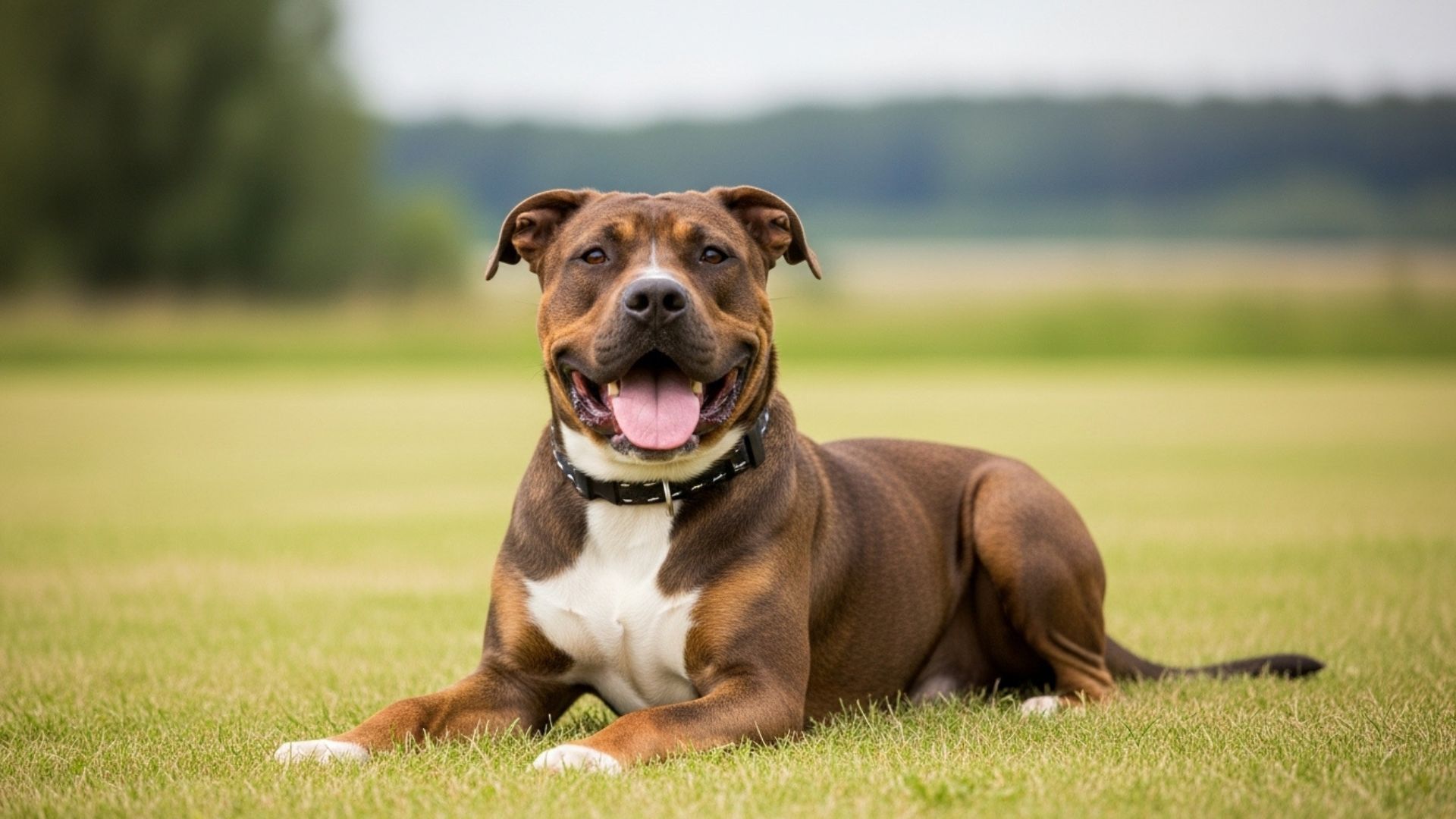Not all dogs are built the same — some are pure symbols of strength, endurance, and vitality. These are the canines that seem to defy time, running tirelessly, staying active, and living long, healthy lives.
When you think of strength, it’s not just about muscles or size; it’s about resilience, stamina, and a strong will that keeps them thriving year after year.
Certain breeds are known for both their physical might and their remarkable health. They’re not just strong protectors but loyal companions built for adventure and endurance. Whether you’re an outdoor enthusiast or simply admire the beauty of a robust, healthy breed, these dogs are the definition of strength with heart.
We’ll dive into the strongest dog breeds whose remarkable health and vigor make them lifelong partners in both work and play.
Quick Insight: A powerful dog needs guidance in all situations—at home, on walks, around other dogs, and when greeting strangers.
Strongest Dog Breeds With Remarkable Health
1. Australian Cattle Dog
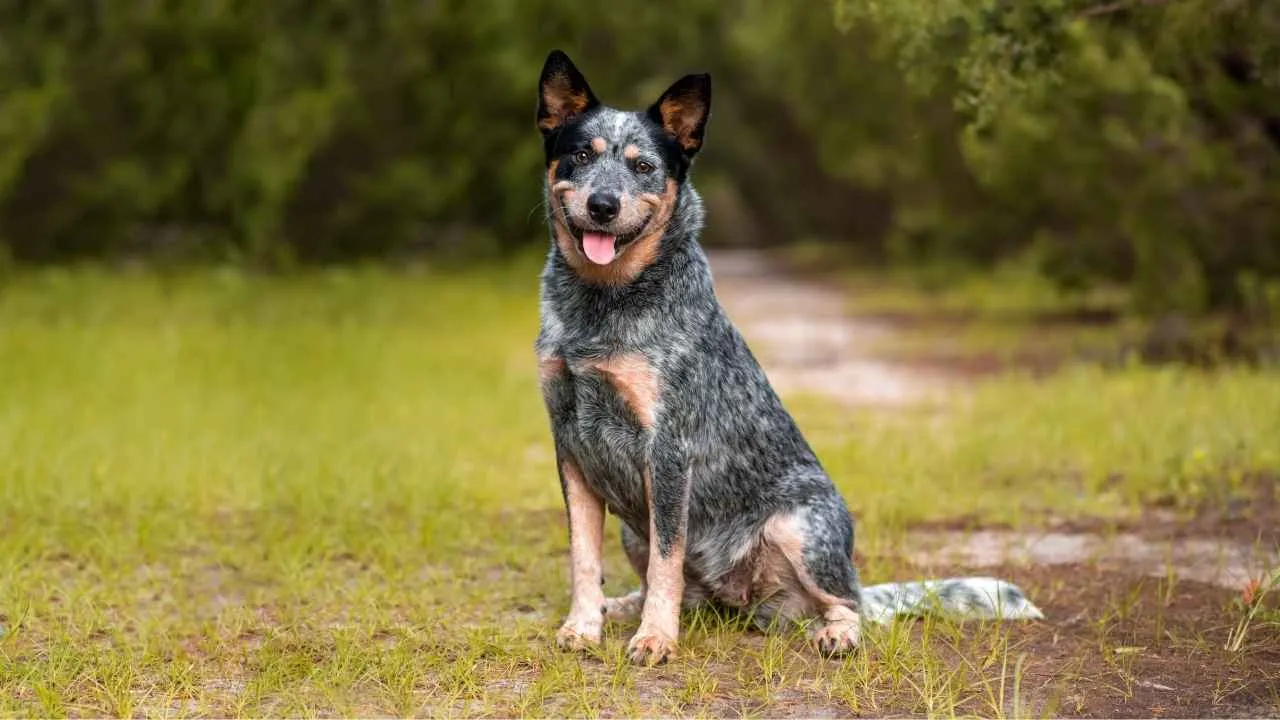
Lifespan: 12–16 years
If there were ever a dog that could outwork, outthink, and possibly out-stubborn its human, it’s the Australian Cattle Dog. Built tough for the rugged Australian outback, these muscular physique dynamos are living proof that strength comes in compact, energetic packages.
Their motto? “Sleep is for the weak—let’s herd something!” These dogs are famous for their brains, bravery, and boundless energy. They form unshakable bonds with their humans, often picking one favorite person and treating them like the captain of their lifelong adventure team.
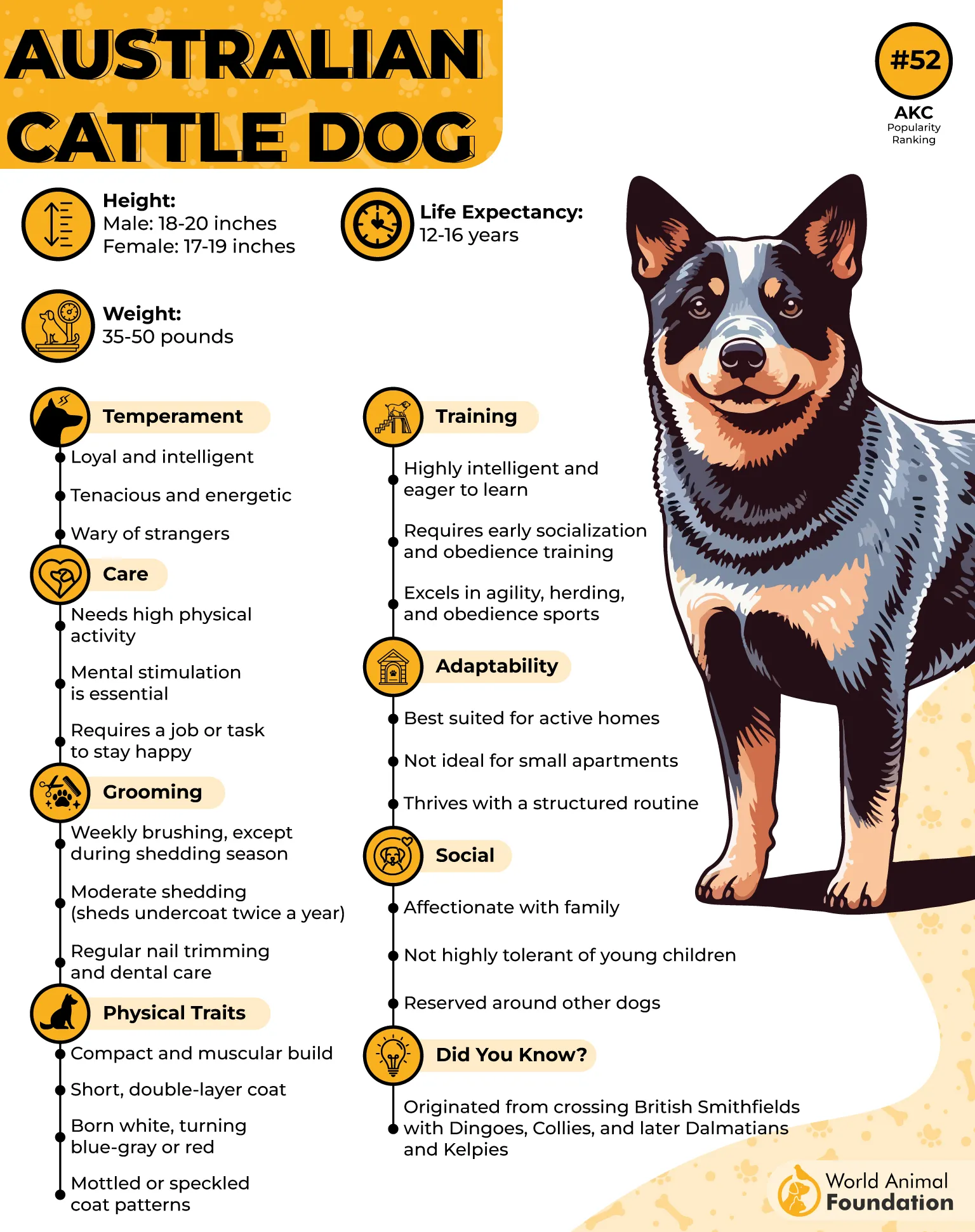
But don’t expect them to cozy up to strangers right away—they’re naturally cautious, always on alert, and suspicious of anything that doesn’t moo. And talk about healthy!
PetMD noted the Australian Cattle Dog has an impressive lifespan of 13–16 years, with one incredible legend named Bluey—yes, the Bluey—holding the Guinness World Record for the oldest dog ever, living to a jaw-dropping 29 years old.
While they’re generally hardy, it’s smart to keep an eye on potential issues like heart conditions, hip dysplasia, eye defects, or deafness. With proper care, training, and plenty of exercise (and we mean plenty), these dogs will thrive for years.
Be warned, though: the Australian Cattle Dog is not for the faint of heart—or for the couch potato. They need a job, a challenge, and something to herd (children, cats, even you, if you move too slowly).
They’re also a bit “mouthy,” meaning they like to nip to keep their flock in line. It’s not aggression—it’s just their way of saying, “Hey, team, let’s move!”
2. Australian Shepherd
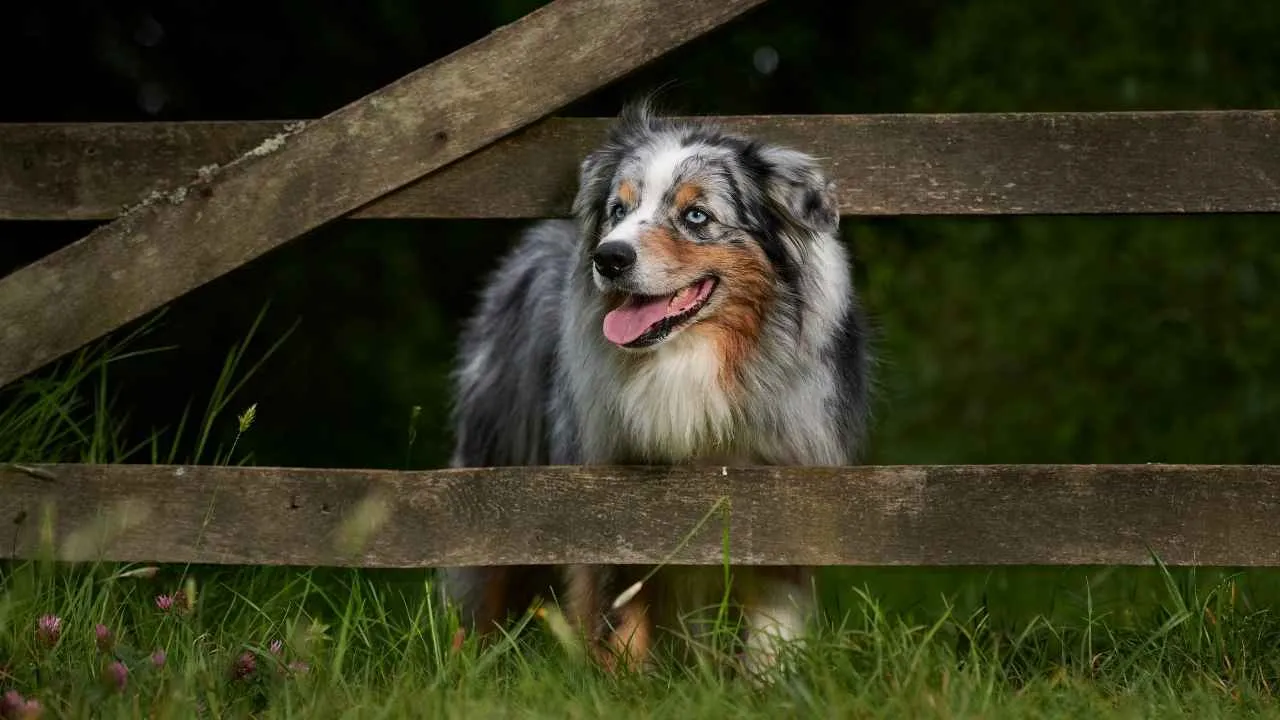
Lifespan: 12–15 years
If dogs had PhDs in loyalty and energy, the Australian Shepherd would have a wall full of diplomas. Originally bred to work on farms and ranches, these dogs are true all-rounders: herding livestock, protecting their family, and somehow still finding time to be your most devoted companion.
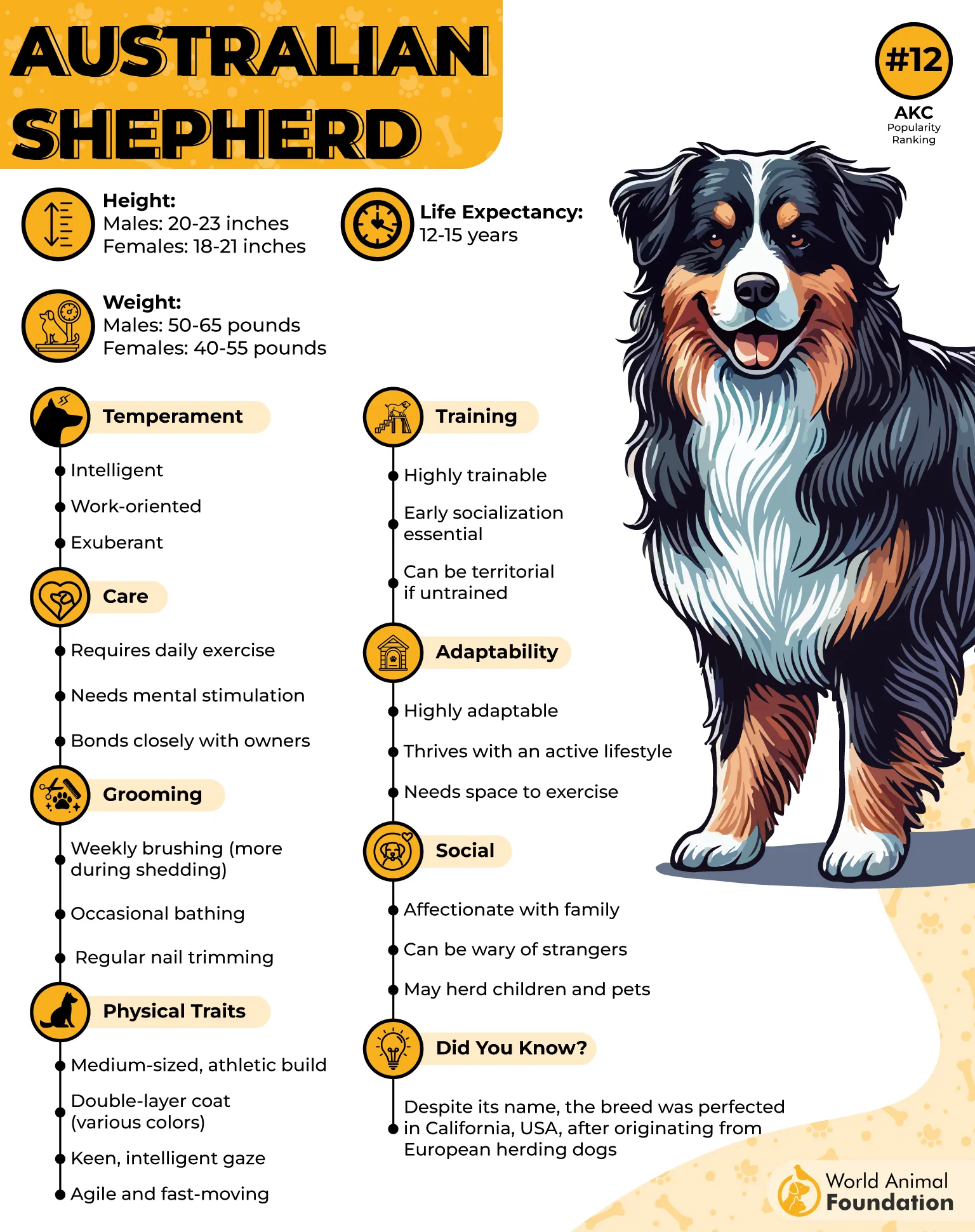
Australian Shepherds are incredibly intelligent and eager to please, but don’t mistake their smarts for laziness—they thrive on activity, challenges, and jobs to keep their minds sharp. These large dogs bond deeply with their humans, often taking their role as guardians very seriously.
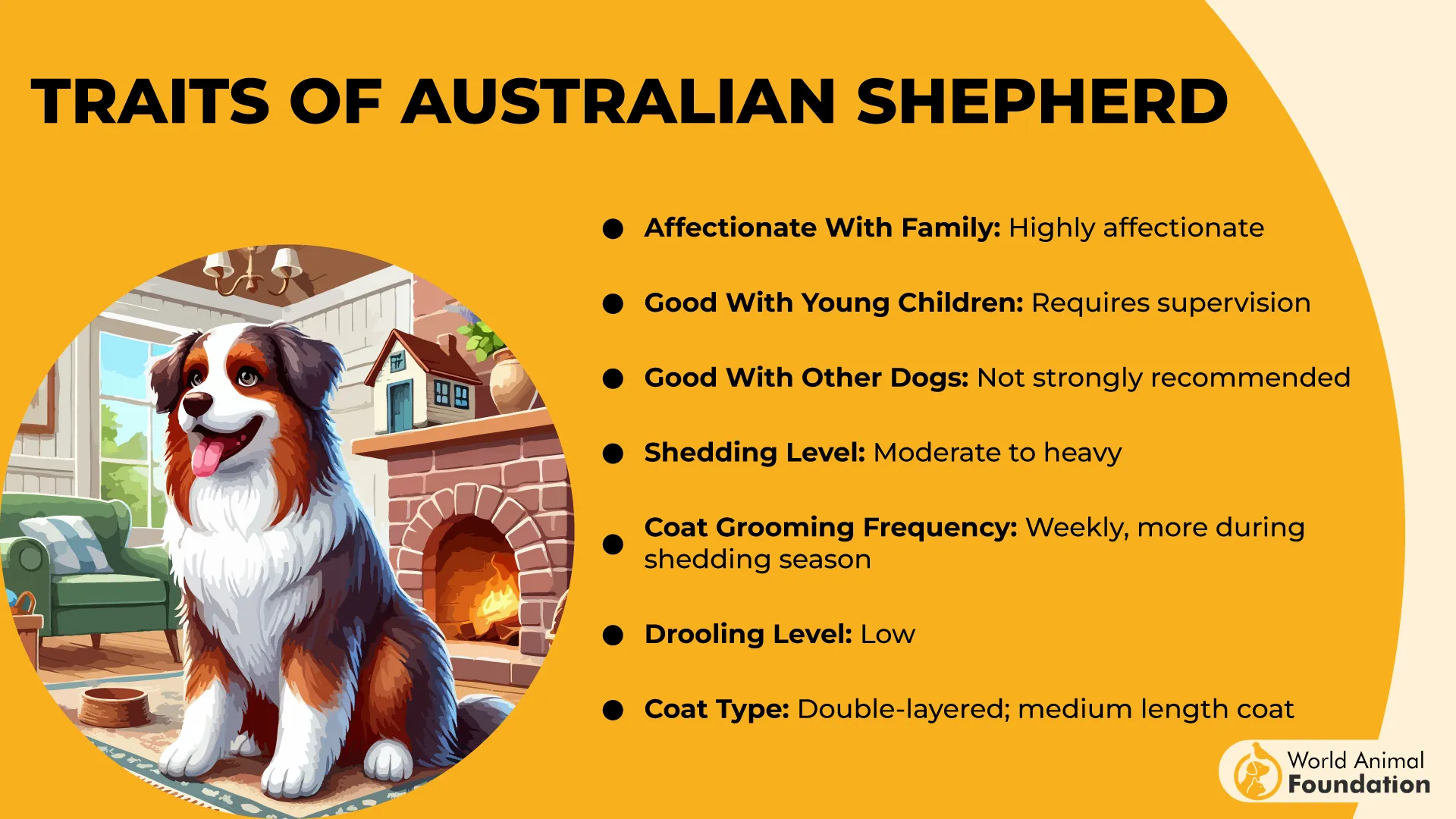
Left unsupervised or under-stimulated, they might become a little overprotective or even headstrong, so proper training and socialization are key, says WebMD.
Health-wise, Australian Shepherds are generally robust. Still, like all breeds, they have some predispositions. Hip and elbow dysplasia, along with hereditary cataracts, are conditions to be aware of, especially if you want your Aussie to stay mobile and sharp well into their senior years.
In short, the Australian Shepherd is the perfect mix of brains, heart, and boundless energy. They’ll herd, guard, and cuddle with equal dedication—just make sure you’re ready to keep up, because this breed doesn’t do slow days.
3. Greyhound
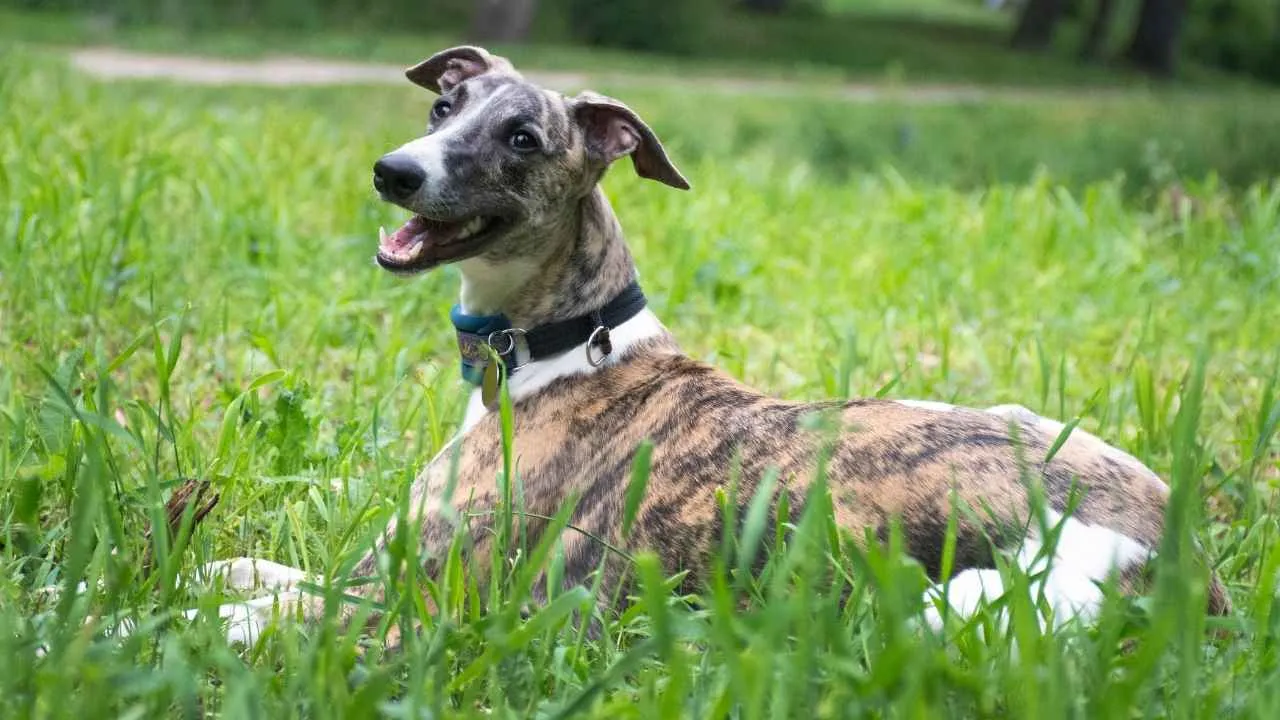
Lifespan: 11–12 years
The Greyhound is what happens when elegance and athleticism decide to share one body. With their sleek lines, long legs, and effortless stride, these dogs look like they’ve just walked off a runway—or sprinted off it at 45 miles per hour, to be exact.
But here’s the twist: behind that aerodynamic design is one of the gentlest souls you’ll ever meet. Greyhounds are famously affectionate and polite companions. They’re wonderful with kids—as long as everyone remembers the golden rule: gentle dog, gentle hands.
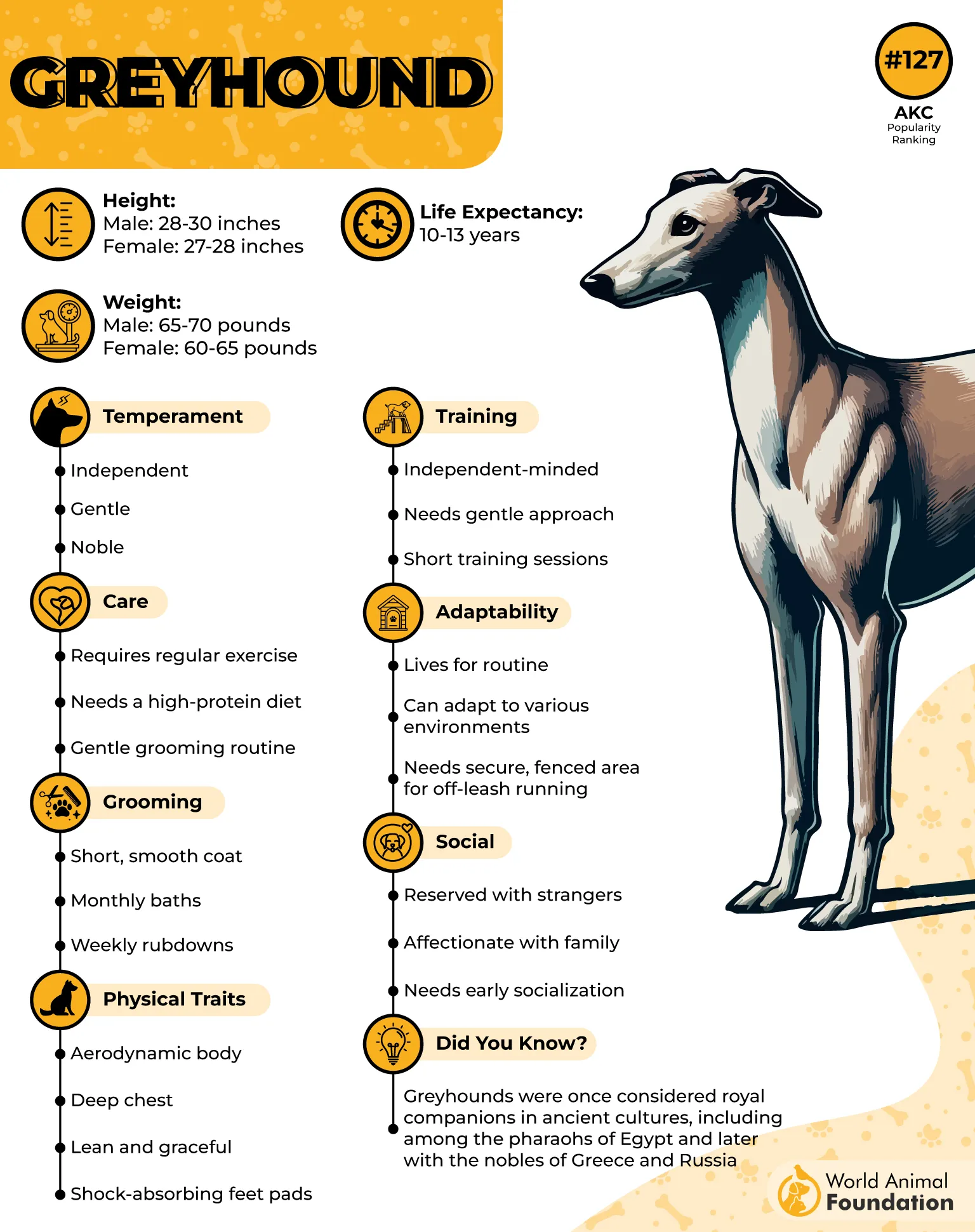
These sensitive sweethearts respond best to kind words and positive reinforcement. Yell at a Greyhound, and you’ll get a look so heartbroken it’ll make you apologize for the next three days.
Despite their race-track reputation, Greyhounds are surprisingly low-key at home. They’re not big barkers (a bonus for suburban harmony), and they’re just as content snuggling on the couch as they are stretching their legs outdoors.
According to Britannica, a 2024 UK study, Greyhounds have a life expectancy of around 11.5 years, which is solid given their size and athletic build. They’re generally healthy dogs, though a few inherited conditions can show up—thankfully, many of these can be identified with genetic testing.
A little proactive care goes a long way in keeping your Greyhound happy, sleek, and ready for the occasional graceful zoomie. Greyhound is proof that true strength doesn’t always mean high energy—it can be quiet, tender, and wrapped in velvet fur.
4. German Shorthaired Pointer
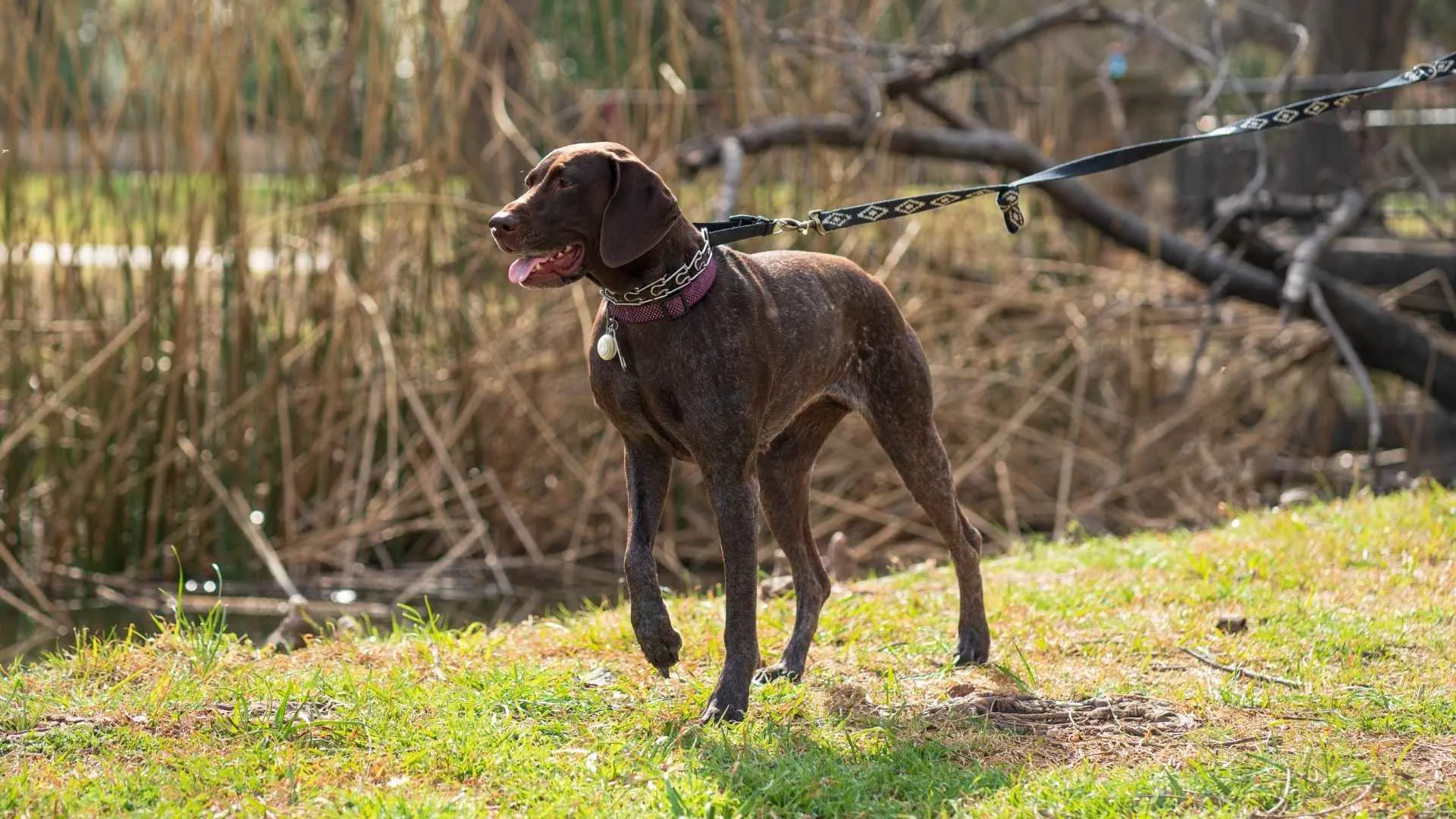
Lifespan: 12–14 years
If there were a canine Olympics, the German Shorthaired Pointer (GSP) would take home gold medals in every event—then ask if you’re ready to train again tomorrow. This excellent guard dog breed is the definition of versatility: fast, powerful, and graceful, with the stamina of a marathon runner and the enthusiasm of your most energetic gym buddy.
Originally bred as an all-purpose hunting dog in Germany, the GSP is a true “jack of all trades”—able to point, retrieve, swim, and charm everyone within a five-mile radius. The American Kennel Club (AKC) calls them the “perfect pointer,” and honestly, they’re not wrong.
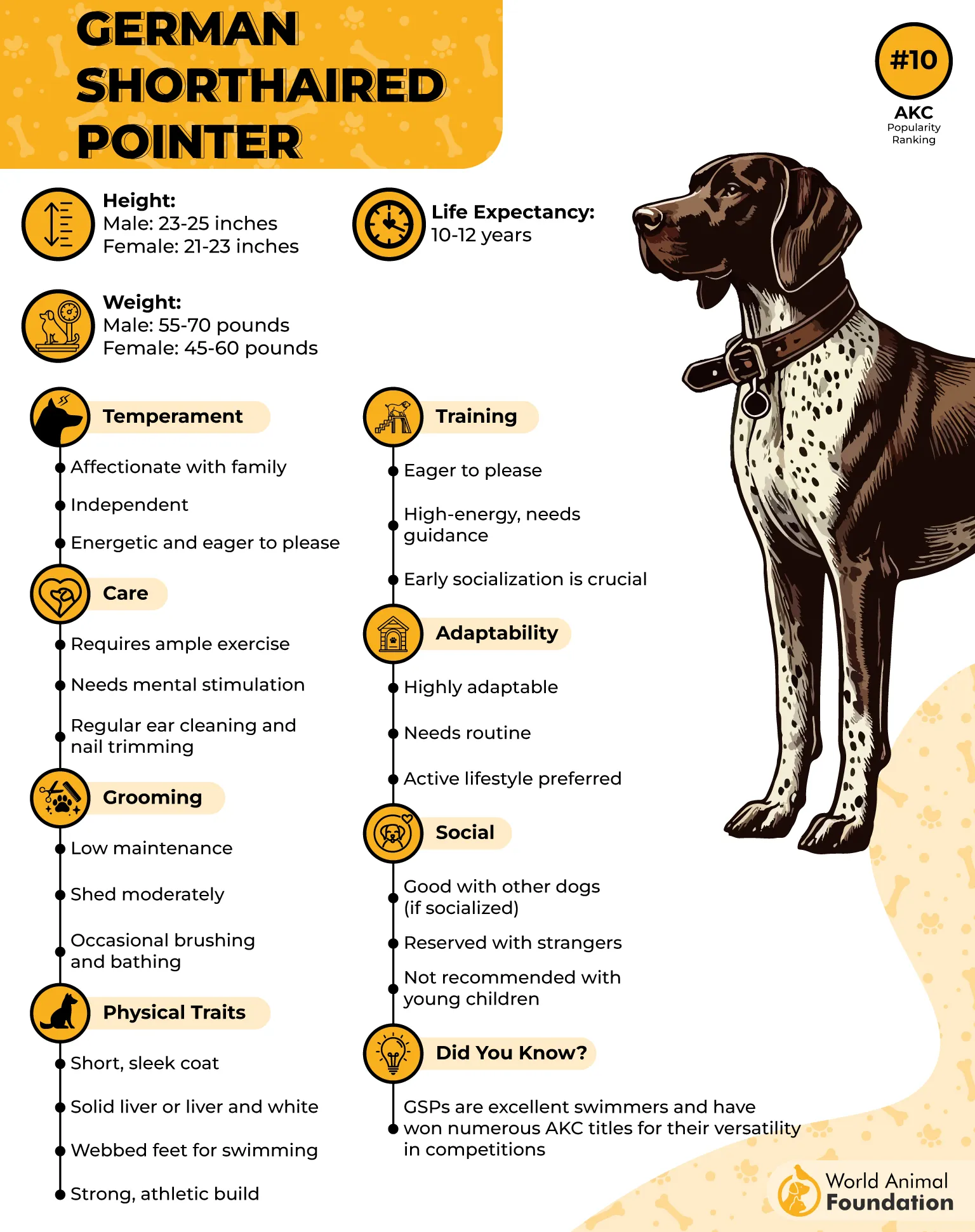
Between their sleek, noble looks and eager-to-please attitude, GSPs are like the overachievers of the dog world—but in the most lovable way. These dogs live for activity. Whether it’s running, hiking, swimming, or playing fetch until your arm gives out, they’ll always say, “What’s next?”
These powerful dog breeds thrive on exercise and human companionship, making them happiest when they have a job—or at least a backyard big enough for their zoomies. Health-wise, the German Shorthaired Pointer is impressively sturdy.
Keep them fit, feed them well, and give them the attention they crave, and you’ll have a loyal, tireless partner who’s just as happy snuggling with you after a long day as they are sprinting through open fields.
GSP is the ultimate adventure buddy—equal parts athlete, aristocrat, and affectionate goofball. If you’re outdoorsy and full of energy, congratulations—you just found your four-legged soulmate.
5. Border Collie
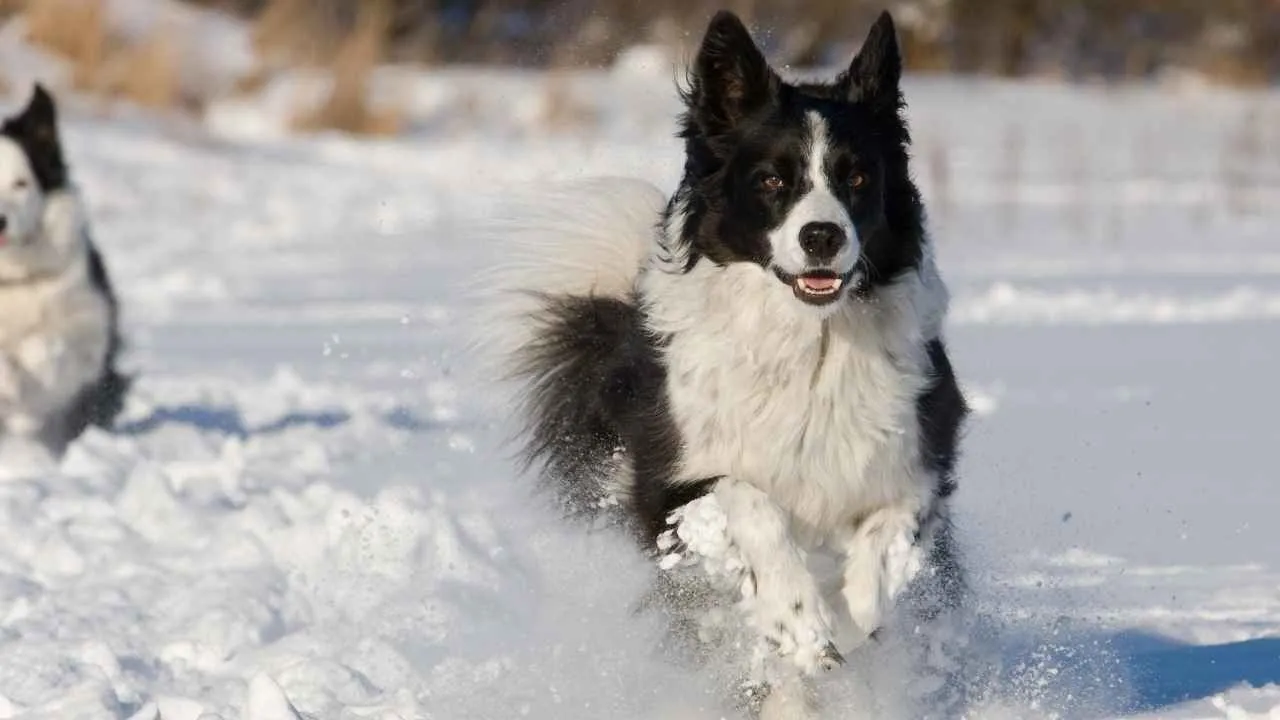
Lifespan: 12–15 years
If dogs had IQ tests, the Border Collie would be the one correcting the examiner’s grammar and solving a Rubik’s Cube between herding sheep. These high-energy brainiacs were originally bred to work on the rugged hills of Great Britain, where their laser focus and agility made them the undisputed champions of the herding world.
Today, they still love a good day’s work—whether that’s rounding up actual livestock or just making sure your kids stay in the same room. Their combination of brains, speed, and endurance is unmatched.
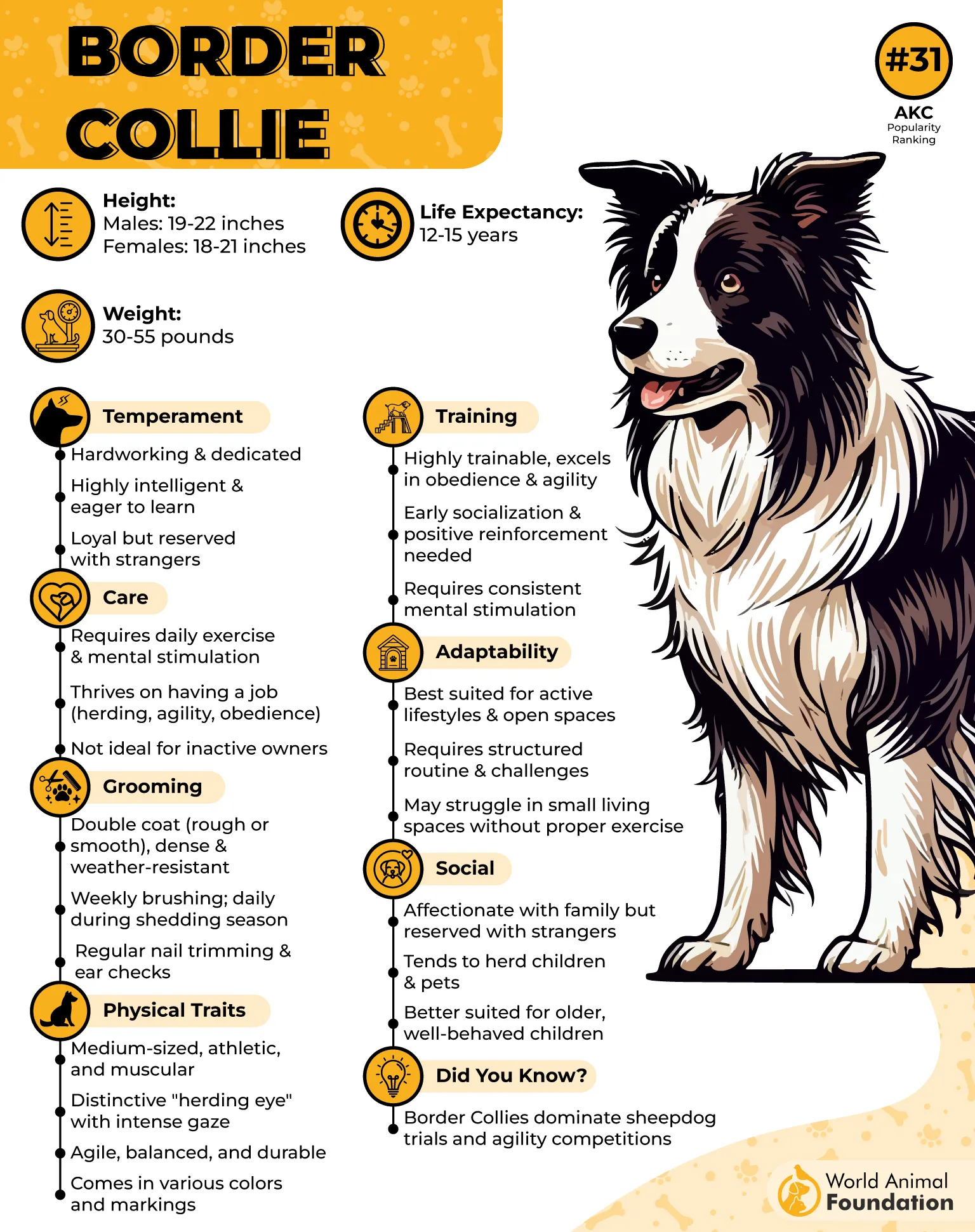
You’ll rarely find a Border Collie who sits still for long; if their body’s resting, their mind is definitely plotting the next game, trick, or adventure.
Border Collie is generally a very healthy breed, built to keep going as long as you can keep up. Of course, no breed is totally immune to health issues—things like hip dysplasia, eye conditions, or joint health concerns can occasionally appear.
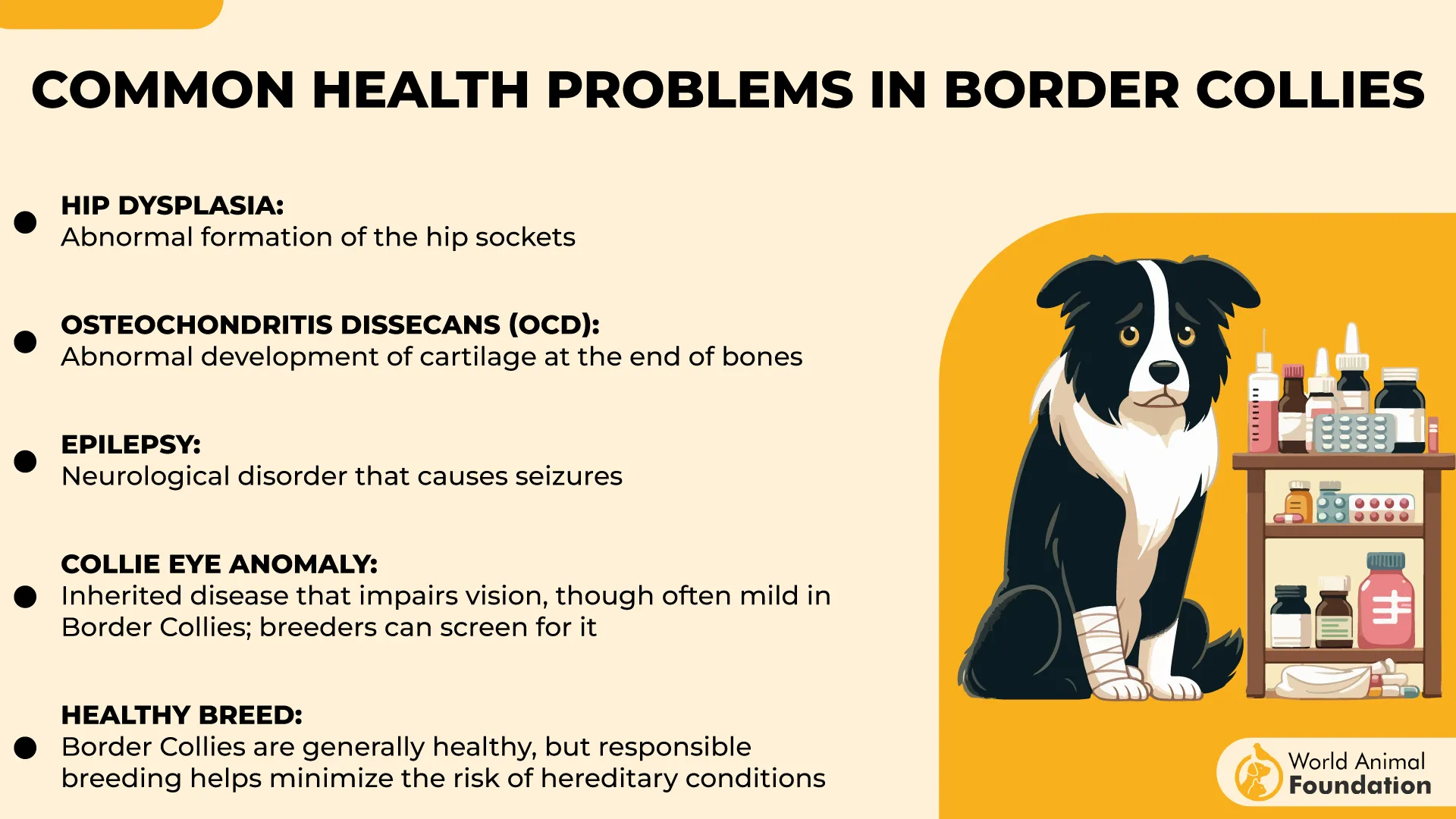
Still, with the right diet, exercise, and maybe some pet insurance (because, let’s face it, they’ll probably attempt parkour at some point), your Border Collie can enjoy a long, vibrant life.
Border Collie is the valedictorian of the dog world—fast, clever, and just a little too good at getting their own way. Be prepared to match wits… and maybe lose a few rounds.
6. Whippet
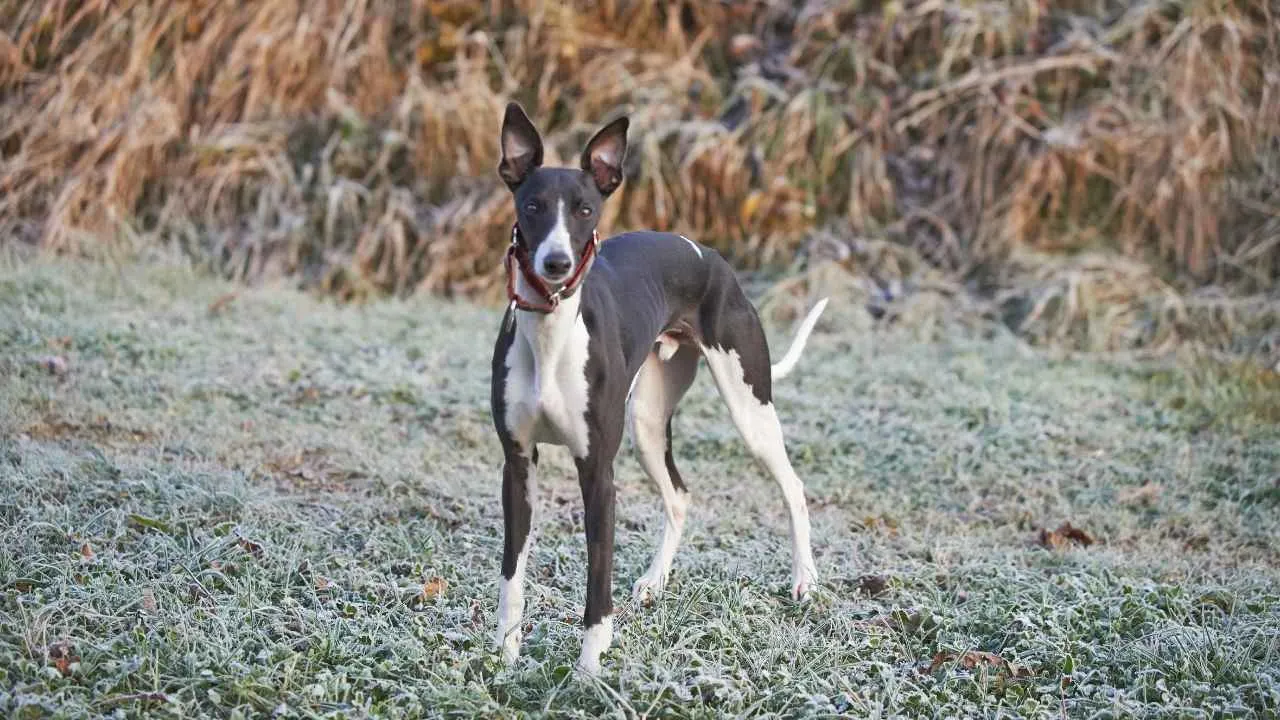
Lifespan: 12–15 years
Meet the Whippet—a dog so aerodynamic, you half-expect it to come with a spoiler. With their sleek build, long neck, and legs that look like they were designed in a wind tunnel, Whippets are basically the Ferraris of the dog world.
These graceful sprinters can hit speeds of 35 miles per hour, but don’t be fooled—after a few glorious zoomies around the yard, they’ll claim your couch like it’s the winner’s podium.
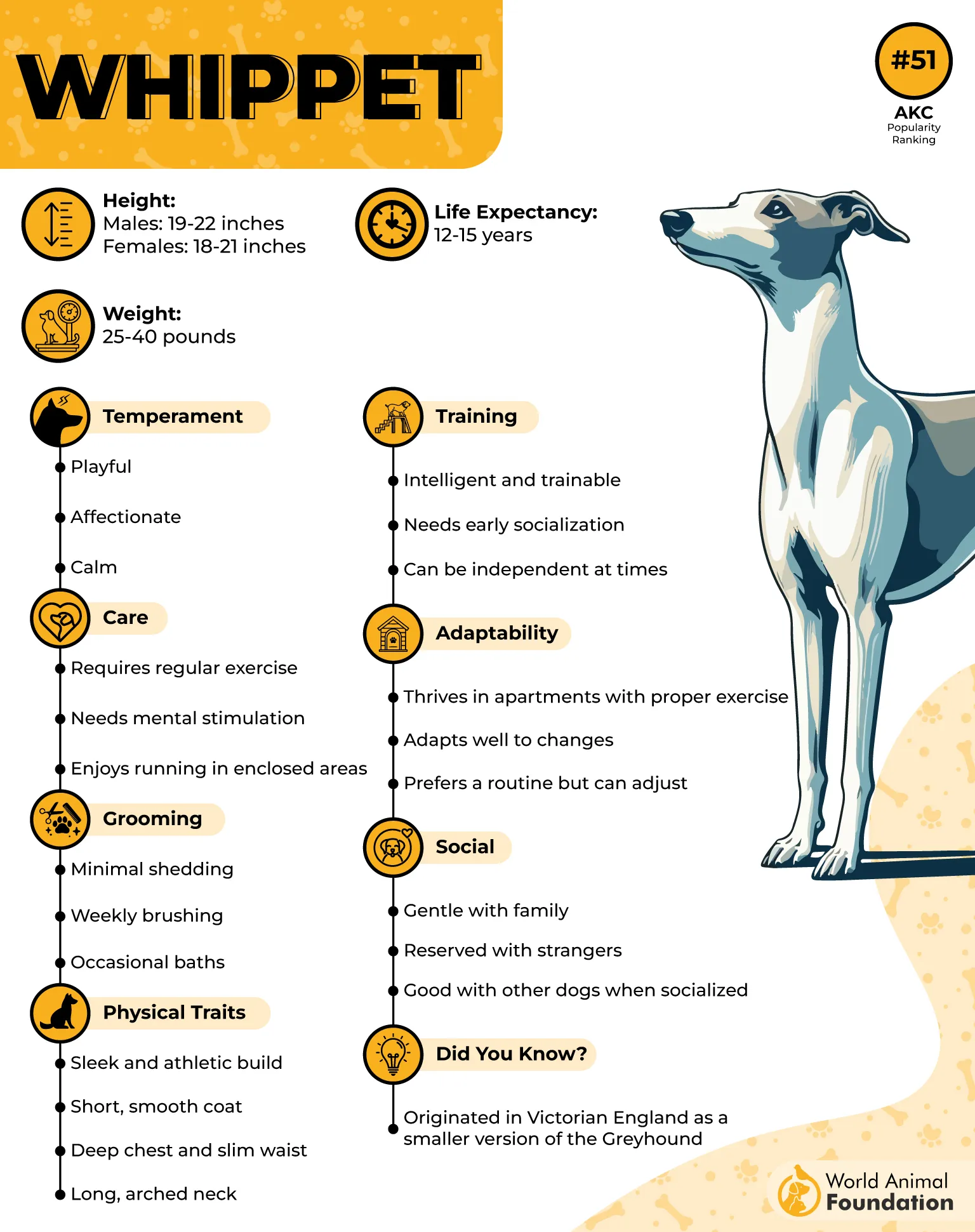
A close cousin to the Greyhound, the Whippet was bred by crossing smaller terriers with these elegant racers, resulting in a dog that’s equal parts athlete and snuggle enthusiast.
They’re the perfect blend of weekend warrior and Netflix marathoner—a rare combination of lightning-fast speed and world-class laziness.
When it comes to health, the Whippet’s slim frame hides a surprisingly sturdy constitution. Keep an eye out for a few hereditary health issues like Mitral Valve Disease, Gastric Dilatation and Volvulus (bloat), and Von Willebrand Disease.
Regular vet check-ups and a healthy diet will keep your Whippet racing (and snoozing) happily for years. Whippets are proof that you can be both an athlete and a professional napper.
One minute, they’re a blur of motion; the next, they’re a living throw pillow. Either way, they’ll steal your heart—and probably your blanket.
7. Shiba Inu
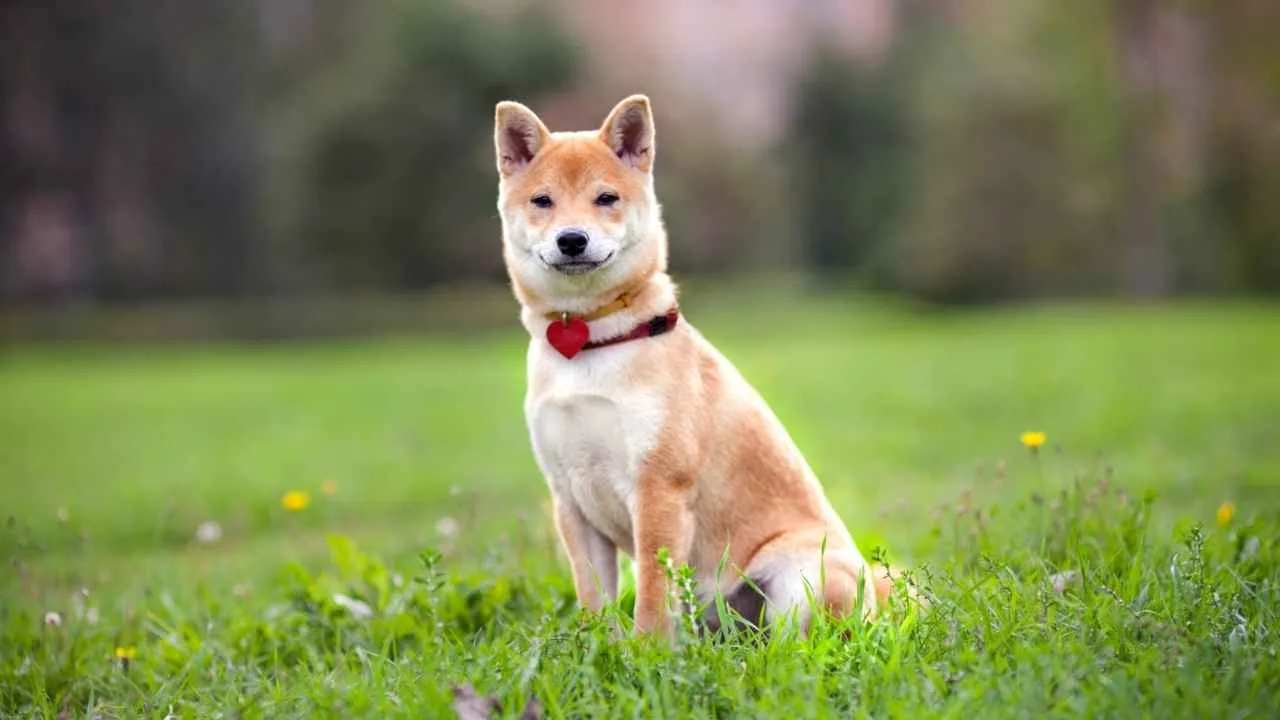
Lifespan: 13–16 years
Don’t let that fox-like face fool you—the Shiba Inu isn’t just cute; it’s a pint-sized powerhouse wrapped in fur and mischief.
Muscular frame, confident, and always camera-ready (seriously, they know they’re photogenic), this breed hails from Japan and carries centuries of history as a tough little hunter and mountain explorer.
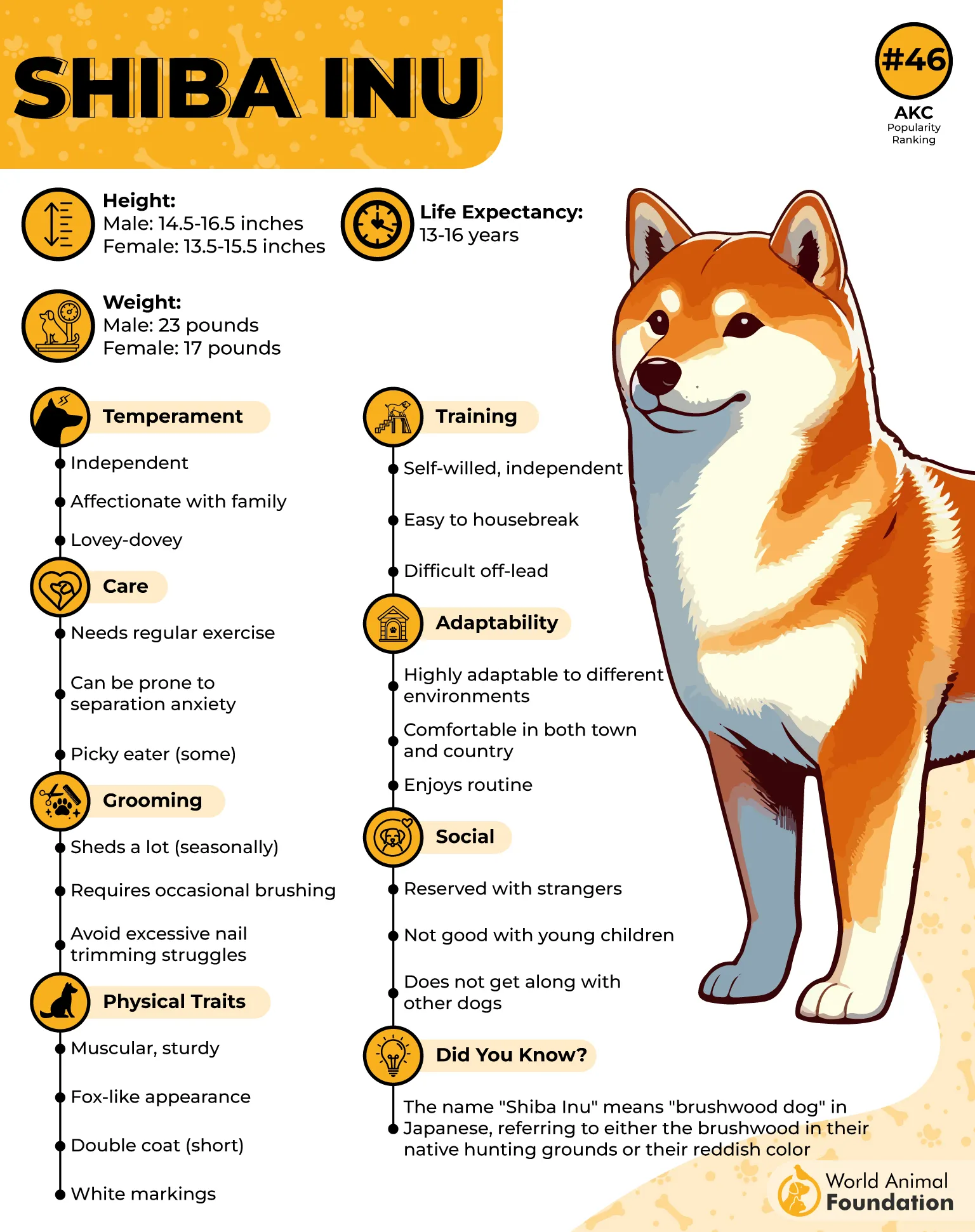
The Shiba Inu walks like it owns the neighborhood—because, honestly, it thinks it does. Bold, brash, and bursting with personality, this dog will fill your home with laughter, energy, and the occasional “did you really just do that?” moment.
Whether it’s stealing socks or giving you side-eye for daring to say “sit,” the Shiba always keeps things interesting. And when it comes to health? The Shiba Inu is one of the most durable small breeds around.
They rarely face major genetic diseases, though you’ll want to watch for things like allergies, hip dysplasia, or eye issues. Keep them active, keep them lean, and they’ll keep you entertained (and slightly exasperated) for well over a decade.
Shiba Inu is like that tiny, unbreakable superhero—compact, confident, and always ready for the next adventure… as long as it was their idea in the first place.
Conclusion
The world’s strongest dog breeds with remarkable health are a testament to responsible breeding practices, genetic diversity, and proper socialization from a young age. From Mastiff breeds and other breeds like the Saint Bernards to German Shepherds, Kangal Shepherds, and American Pit Bull Terriers, these devoted dogs combine a muscular build, protective nature, and the strongest bite force with a calm demeanor and loving companionship. Working and sled dogs like the Siberian Husky and Alaskan Malamute thrive in active lifestyles, requiring regular exercise, obedience training, and a balanced diet to maintain robust health and well-being.
Despite their natural protective instincts and historic roles as war dogs, bull baiting, or hunting wild boars and mountain lions, these breeds can also be great family pets when guided with care. By focusing on genetic health, proper nutrition, and active engagement, these unique breeds remain incredibly loyal, independent, and remarkably healthy, proving that strength and companionship can go paw in paw in the canine world.


